burgerchief
gamer level 7
15345 xp
15345 xp
followers
51
51
Use my invite URL to register (this will give me kudos)
https://boardgaming.com/register/?invited_by=burgerchief
profile badges
...
...
...
...
recent achievements

Copper Supporter
Show your support for boardgaming.com by purchasing a total of 5 Gems
Show your support for boardgaming.com by purchasing a total of 5 Gems

Rated 100 Games
Rate 100 games you have played.
Rate 100 games you have played.

Count / Countess
Gain 50 total followers
Gain 50 total followers

Petroglyph
Explore select games by completing a series of exploration actions. learn more »
Explore select games by completing a series of exploration actions. learn more »
Player Stats
Critic (lvl 3)
1485 xp
1485 xp
Explorer (lvl 3)
1145 xp
1145 xp
Professor (lvl 3)
967 xp
967 xp
Reporter (lvl 3)
1037 xp
1037 xp
About Me
Flashback! 1993.
On rainy days my parents didn't want us watching TV all day. So I started playing board games with my 2 older brothers. However, none of us really enjoyed Monopoly, Scrabble, etc. But we did enjoy HeroQuest! After that we made our own pen and paper Role Playing Games and we would rotate the dungeon master and had some amazing times. Then, one day my middle brother brought home Axis and Allies.
As a 9 year old playing Axis and Allies, my strategy was pretty weak, and they constantly changed the rules against me if I was about to win, but it was a lot of fun.
Through high school my friends played Risk 2210 and even kept track of the ending scores which we saved to this day. But then college put us on a hiatus.
After college my friends got back into board games with Catan, Dominion, Ra, Citadels, BSG, Letters to White Chapel and Shogun. Since then I've started getting my wife into board gaming and wanted to grow my own collection that included games I can play with her and eventually our baby daughter.
Now I've found this wonderful website with helpful and considerate members and felt like I was at home!










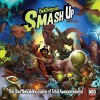














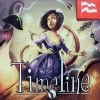





















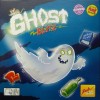
























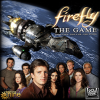


































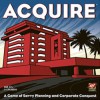


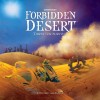













Vast: The Crystal Caverns
Vast is an asymmetric game where 1-5 characters can play. A dragon, knight, goblin horde, thief and cave all try to accomplish their own separate goal. The game has a modular board and numerous mechanics depending on the players. The modular board has “lit” tiles and “dark” tiles. The lit side means the area has been revealed and the dark side means it has not been revealed yet. These tile differences affect movement.
Each character is essentially playing a different game from everyone else and each game has a different objective.
Knight: the knight’s main game is action selection and managing her 3 stats, buffing strength, movement, or perception based on what she is trying to accomplish, defeat, or prepare for that turn. The knight has entered the cave to slay the dragon but initially she is fairly weak. The knight largely explores the cave by revealing dark tiles and then resolving them. They may have treasure, events, goblin ambushes etc. Before she can beat the dragon she must gain treasure, fight goblins, complete quests, survive events and explore the cave in order to gain stat cubes to increase stats and be able to chase down and over power the dragon. Unfortunately for the knight, a horde of goblins are trying to kill her..,
Goblins: you are the leader of the goblin horde and win if you can kill the knight. The goblins are in 3 tribes, each with their own unique abilities. Each tribe has a population. The main goblin game is managing their population, they want a big population in order to attack the knight, but if there are too many goblins then they start infighting and break apart. Goblins play a risk/reward game with appearing on the board out of hiding and populating their tribes. They also gain other cards which allow them to control monsters which aid their fight or cards that give them special abilities. Where the knight explores the dark tiles of the board and makes them lit, goblins have unlimited movement on the connected dark edges of the board but have limited movement in lit areas. Unfortunately for the goblin a hungry dragon lurks in the cave…
Dragon: the dragon starts the game “asleep” under the cave and their goal is to “wake” and exit the cave. This is done by managing a hand of cards which allows for a variety of different actions. Certain actions or events, like eating goblins, revealing certain tiles, and finding treasure, allows the dragon to wake up a little and gain power. This is important for avoiding the knight and eating goblins. At a certain point the goblin awakes and tries to escape. Unfortunately for the dragon, along with the knight there is a pesky thief is there stealing all its gold…
Thief: the thief is cursed to never leave the cave or be able to die unless it can steal a certain amount of treasures (kinda like the movie Groundhog Day). On his turn he allocates action points to different stats which allow him to move, avoid detection, and steal. He can rob other players, take treasure, or break into vaults. After this he has to stash the treasure away. Each stashed treasure gives him stronger abilities or different choices. Unfortunately for everyone, the cave is alive and wants them all dead…
The Cave: You just want the goblins, thief, knight and dragon to leave you alone. You are going to collapse on everyone once and for all. your job is to grow the map until there are no more tiles to place, and then collapse it in a specific way in order to win. You also hand out treasure, decide events, place all tiles, and influence other players. You are also collecting random tiles, which, like the dragon, allow you to take actions like changing the cave, adding walls, moving players, etc
Things I like:
-plays out like a story, this helps to keep players involved and makes it seem less personal.
-First play is fun to see what other characters can do since each person is so different
-In most games I’ve played, end is very exciting
-Balance in game comes from interaction of players
-Each player has a path to victory that is so different from everyone else. In games I’ve played 4 out of the 5 characters has won with the last one a turn from winning 2 times.
-Very tactical game with longer strategies for each player
-Even if a player is not in a good position to win, they can have a tremendous outcome on the game.
So-so stuff:
-plays better with 4 and 5 players
-may not be perfectly balanced
-Players will probably prefer the play style of one character over another
-Possible to get unlucky with card or dice and lose
-some configurations of characters seem much better than others (goblin v knight v dragon is usually better than thief v cave v goblin)
-Some players may get lucky draws/rolls and could potentially be very strong early
-Without cave player there is additional randomness
-Fewer players can mean less balance since the game hinges on interaction between players.
Things that bother me:
-Interactions between players gets confusing
-first few times playing can take a very long time (3+hrs)
-Can have long down time
-Very likely you will play the first few games and find out at the end you played a few rules wrong
-Some final turns can feel like you are king making
-Individual rules sheets for players are great, but some important rules are hard to find and only on specific rules sheets
My Impressions:
This is not my favorite game, but it can be immensely fun. Needs to be played with the right players as well since some will be very frustrated by rule clarity or overwhelmed by choices. However, it can also make for memorable games. One game we played on the last turn the thief was one turn from escaping with his loot, the knight had the weapon to deal the final blow to the dragon, and the dragon was awake and sprinting for the exit, when the cave player suddenly collapsed on everyone, winning the game. This game makes stories, it creates very memorable experiences which is something I love in a game. However, each play of this game could be one of the best gaming experiences or a very mediocre one. This is a game to bring out each week or month with the same players, as teaching the rules can be a challenge. Overall, when I’m in the mood for an epic story and I have the time, I will always suggest this game.